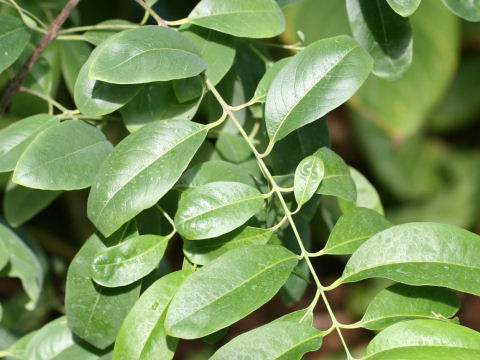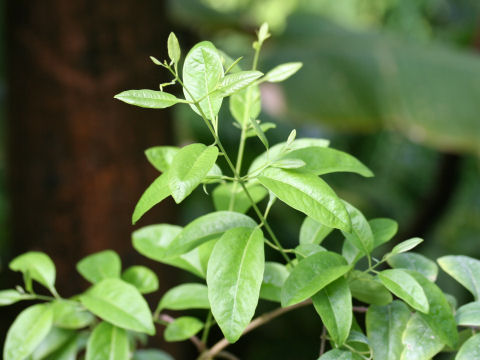 |




|

|
ìAWA©çChɪzµÄ¢Ü·B²Í¼§µÄA³ÍPO[gÙÇÉÈèA÷çÍÔFðµÄ¢Ü·B¼ñ¶A¨ÅA^PÞâVÞÈÇ̪Éñ¶µÜ·BtÍ·È~`ÅζµÜ·B¼OÍÞª¢±Æ©çBÞÉÍFª èéçØâ×H¨A¤ÈÇÉp³êīܵ½BuñhÍotæèFµvÌu¹ñ¾ñvÍA{í̱Æð¢¢Ü·B
|

|
rN_ÈrN_®ÌíάØÅAw¼Í Santalum albumBp¼Í SandalwoodB
|

|
The Sandalwood (Santalum album) belongs to Santalaceae (the Sandalwood family). It is a semi-tall evergreen tree that is distributed from Southeast Asia to India. The trunk is erect and grows to a height of about 10 m, and the bark is reddish brown. It is a semi-parasitic plant, parasitic on the roots of bamboo and palm trees. The leaves are oblong and opposite. The name comes from the white color of the wood. The wood has an aromatic fragrance and has long been used for fragrant woods, crafts, and carvings. The word "ñh" (sendan) in the phrase "ñhÍotæèFµ" (The sandalwood is fragrant from its seed-leaves) refers to this species.
|

|
ss¶æus{§A¨vÉÄA2006N0202úBeB
|



